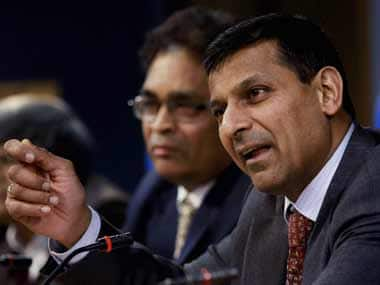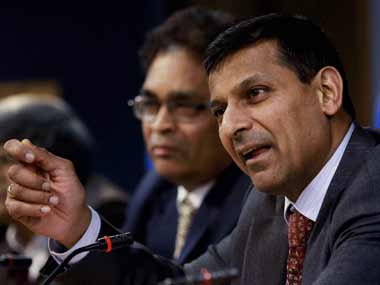Raghuram Rajan kept his word. Chances for any reduction in the key lending rate of the Reserve Bank of India (RBI) was the least expected outcome of Tuesday’s monetary policy as Firstpost had noted here . Between the last rate cut on 15 January and now, only a fortnight had passed and there were no fresh developments in the economy and no key macro numbers had come out for the central bank to go for a rate assessment so soon. Rajan had highlighted these as a precondition for further rate cuts. Also, with the budget just a few weeks away, it made sense for Rajan to wait for a clearer picture of the government’s much-promised fiscal roadmap. Hence repo rate - the rate at which the RBI lends to banks - was retained at 7.75 percent. If Jaitley gets his budget solutions right to manage the government’s finances and stimulate economy, another 25 basis points (bps) cut in repo rate is fairly certain on or before 7 April. One bps is one hundredth of a percentage point. That said, the operative part of today’s monetary policy is the higher-than-expected half a percentage point cut in the statutory liquidity ratio (SLR), or the portion of funds banks need to mandatorily invest in government bonds. [caption id=“attachment_2077271” align=“alignleft” width=“380”]  PTI[/caption] After a gap of four months Rajan yet again lowered SLR to 21.50 percent, which would theoretically release about Rs 42,000 crore into the banking system. The RBI expects banks to use the SLR headroom and increase their lending to productive sectors. This is unlikely in the foreseeable future, given the current high SLR holding of banks (an average 29 per cent as on January 9), weak credit appetite and persisting stress on banks’ balance sheet. The SLR headroom would come into play, unless there is a dramatic pick up in economy, For now, the SLR cut would benefit banks to meet their liquidity coverage ratio (LCR) requirements under the Basel-III capital standards. For this, the banking system, as a whole, is estimated to invest about 8 per cent to 10 per cent in government bonds. A lower SLR holding requirement would, thus, help banks in the form of more leeway to meet their mandatory reserve requirements but not to expand their loan book. [caption id=“attachment_2077331” align=“alignleft” width=“479”]  Data on SLR[/caption] But, in a broader context, the SLR cut is part of the central bank’s strategy to release the locked, or rather unused, capital from the banking system and let them flow into productive sectors when there is a higher demand for capital in the economy. This has been the practice internationally. At 21.50 per cent, SLR is closer to 66-year lows. SLR stood at 20 percent in March 1949 and was increased to 25 percent in September 1964. Since then the ratio has only gone up for long. It touched a peak of 38.50 percent in September 1990. Since then the ratio has come down. See the table here. One should thank Rajan for taking Indian economy out of the so-called financial repression by gradually phasing out SLR. After Rajan took over in September 2013, the SLR has been reduced twice by a total of one percentage point. Financial repression, in economic parlance, is a form of directed lending employed by the governments using central banks to channelise funds from commercial banks of a country to themselves and denying fund flow to the private sector. A higher SLR holding means banks are forced to fund a higher chunk of government borrowing. The term financial repression was originally introduced in 1973 by Stanford economists Edward S Shaw and Ronald I McKinnon. This can be implemented by way of directed lending to the government, caps on interest rates and regulation of capital movement between countries. The term was initially used in response to the emerging market financial systems during the 1960s, 1970s and 1980s. Financial repression has huge adverse impact on the private sector because banks have to mandatorily invest in SLR securities upon which they earn a lower returns than had they been able to use the funds to give away loans. Reducing SLR requirement means banks can use the money they previously invested in SLR for lending to the private sector. In other words, lower SLR would mean that banks need to make lesser reserves on their incremental deposits. Even if the current SLR cut wouldn’t benefit borrowers in the near future, in the long term, this will make the country’s banking system efficient to cater to the demands of a growing economy, when the growth picks up to high-growth trajectory. (Data support from Kishor Kadam)
In the long term, the SLR cut will make the country’s banking system efficient to cater to the demands of a growing economy
Advertisement
End of Article


)
)
)
)
)
)
)
)
)



